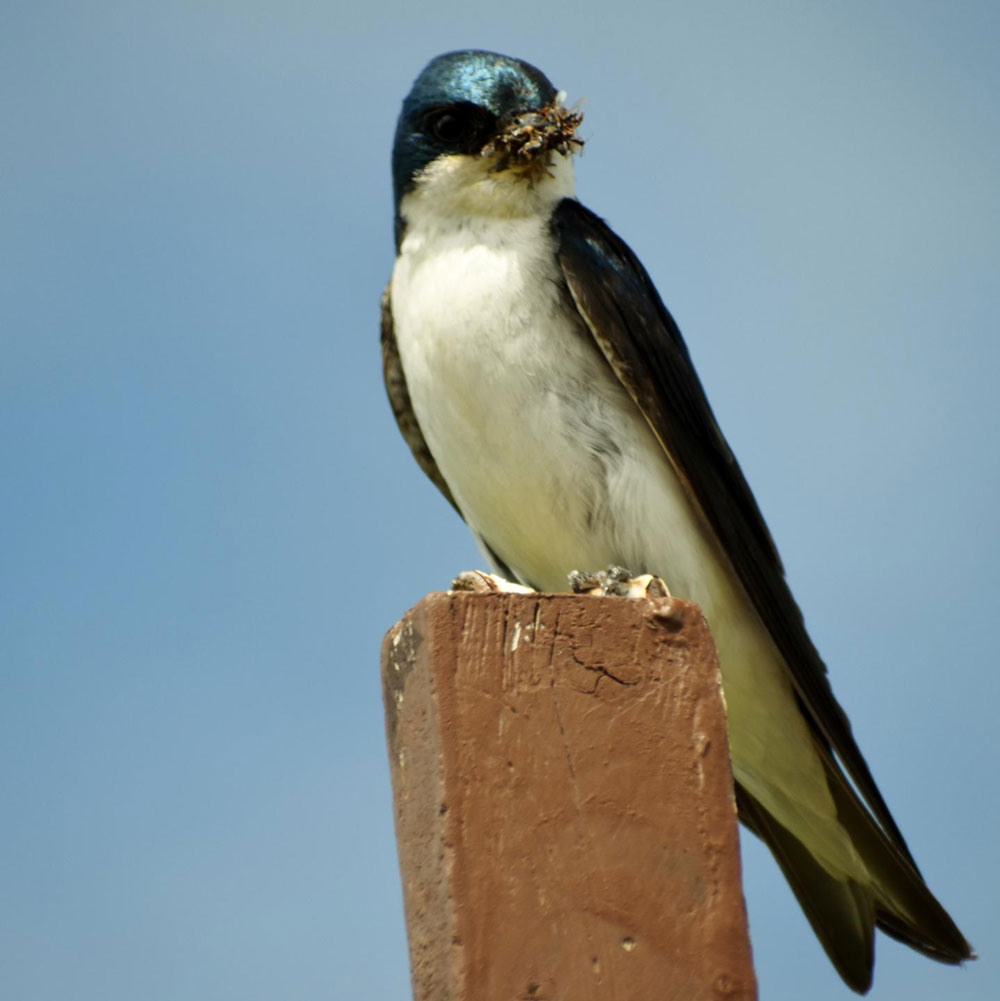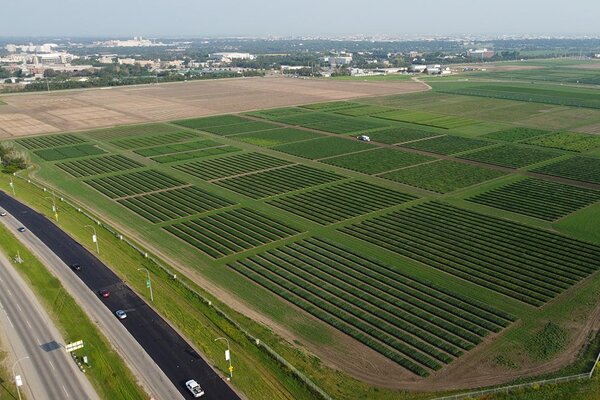
How does agriculture affect vulnerable insect-eating birds?
U of S researchers find that birds living in cropland must work harder to find their preferred prey
Aerial insectivores—birds that hunt for insect prey on the wing—are declining across North America as agricultural intensification leads to diminishing insect abundance and diversity in many areas. A new study from The Condor: Ornithological Applications looks at how Tree Swallows’ diets are affected by agriculture and finds that while birds living in cropland can still find their preferred prey, they may be working harder to get it.
The University of Saskatchewan’s Chantel Michelson, Robert Clark, and Christy Morrissey monitored Tree Swallow nest boxes at agricultural and grassland sites in 2012 and 2013, collecting blood samples from the birds to determine what they were eating via isotope ratios in their tissues. Tree Swallows usually prefer aquatic insects, which they capture in the air after they emerge from wetlands to complete their life cycles. The researchers suspected that birds living in crop-dominated areas would be forced to shift to eating more terrestrial insects, due to the effects of insecticide use and other agricultural practices on wetland habitat.
Instead, they found that swallows were eating more aquatic than terrestrial insects at all sites, and in 2012 it was actually the grassland birds whose diet contained a higher proportion of terrestrial insects. The results suggest that wetland habitat may provide a buffer against the negative effects of agriculture. However, birds living in cropland weighed less on average than their grassland-dwelling counterparts—a sign that they may be struggling.
“We set up this study to see if insectivorous swallows would be disadvantaged in agricultural croplands by shifting their normally aquatic diet to terrestrial insects to compensate for lower food availability. We were surprised that the birds did not generally do this,” says Morrissey. “Adult swallows in particular were heavily reliant on aquatic prey regardless of land use type. At the grassland dominated site, in fact, they fed their nestlings a wider variety of prey from both aquatic and terrestrial origin. Diet did not seem to influence body condition, but birds in cropland sites were lighter on average which may signal they are working harder in croplands to obtain their preferred aquatic prey. This work shows how important wetlands are for maintaining birds in agricultural landscapes and these are important reservoirs for conserving biodiversity in an otherwise heavily altered landscape.”
“Grasslands are one of the most imperiled ecosystems on the planet because their rich soils are ideal for agriculture. Pesticides and fertilizers are applied in ever-increasing quantities, which has serious implications for organisms that live there,” adds Acadia University’s Dave Shutler, an expert on Tree Swallow ecology who was not involved with the study. “This study compared the diets of Tree Swallows in natural grasslands and croplands, each of which had roughly similar wetland densities. Although diet composition was similar in both areas, it appears that diet quality was better in the natural grasslands, because birds there were heavier and in better condition than those in the cropland.”
(Story courtesy of the American Ornithological Society)


